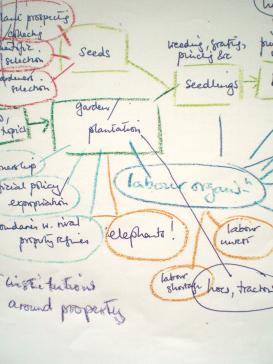In the 1800s, the British laid plans for growing tea in Assam to substitute for expensive imports from China. They transplanted Chinese tea plants, Chinese tea coolies, and various other forms of Chinese skill and expertise into Indian territory, adapting them to an alien natural and social environment through various processes of naturalization. New plants were imported or bred, new curing processes were developed to suit British tastes, and in contrast to the smallholder-based Chinese tea industry, tea in India was grown on a large scale, as part of a plantation system.
To investigate these processes of translation and adaptation, and to compare the characteristics of the “culture of tea” in each context, we select technical, institutional, literary, and other texts from the large corpora generated around Chinese and Indian tea to map the operational sequences (chaînes opératoires) of tea production and consumption that they describe. Plotting and comparing the skills, knowledge, material, and social and symbolic resources mobilized in specific cases, this diagrammatic technique will generate revealing patterns of transmission, nontransmission, and difference between the Chinese and Indian tea systems.
The question Where do we put the elephants? suggests the ontological challenges of devising such a mapping system. One of the perils that a British tea-plantation manager in South India faced was elephants. Huge, fierce and hungry, a rampaging elephant can destroy a tea garden in minutes. A bullet would neatly resolve the material problem of the elephant. But the tea estates occupied land leased from the rajah, who reserved the sole right to shoot these royal animals. So how do we enter elephants on our diagram—as a material pest or as a political symbol of the conditional rights to land of British tea companies?

